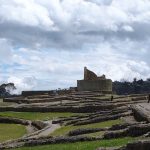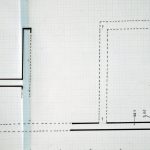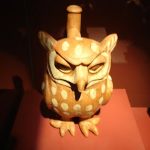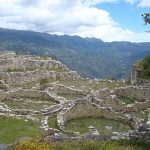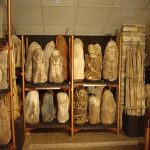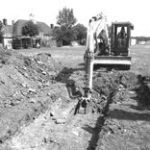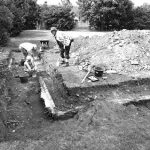No. 511 OCTOBER 2013 Edited by Mary Rawitzer
HADAS DIARY 2013 & 2014
All Lectures are held at Avenue House, 17 East End Road, Finchley, N3 3QE, and start promptly at 8.00 pm, with coffee/tea and biscuits afterwards. Non-members welcome (£1.00). Buses 82, 125, 143, 326 & 460 pass nearby and Finchley Central Station (Northern line) is a short walk away.
Tuesday 8th October, 8pm Brunel’s Tunnel under the Thames. The first tunnel under a river anywhere in the world, built by Sir Marc Brunel and his son Isambard Kingdom Brunel (then only 19 years old). A lecture by Robert Hulse, Director of the Brunel Museum.
Tuesday 12th November, 8pm The Lions on Kunulua: excavations of the Early Bronze and Iron Age periods at Tell Tayinat, Hatay, Turkey. Lecture by Dr. Fiona Haughey.
Sunday 1st December, 12 noon – 4.30 pm (approx.) HADAS Christmas Party at Avenue House. Buffet lunch. Price £25 to include one drink. Cash bar. Booking form with this Newsletter..
Tuesday 14th January 2014, 8pm The Naval Graveyards of Greenwich. Lecture by Malcolm Godfrey
Tuesday 11th February 2014 To be announced
Tuesday 11th March 2014, 8pm The Sandridge Coin Hoard. Lecture by David Thorold, Curator (Prehistory to Medieval), Verulamium Museum.
Tuesday 8th April 2014, 8pm Restoring House Mill (working title) Brian James-Strong, River Lea Tidal Mill Trust
Another Date for your Diary
The London & Middlesex Archaeological Society (LAMAS) is hosting its 48th Local History
Conference at the Weston Theatre, Museum of London on Saturday, 16th November 2013 from
10.00am to 4.00 pm. The theme of this all-day conference is “The River and Port of London” and as usual there will be displays by local history societies throughout the day.
Tickets are available now. The cost is £12 per person if paid before the 31st October, or £15 per person from 1st November.
Ticket applications to: Eleanor Stanier, LAMAS Local History Conference, 48 Coval Road, East Sheen, London SW14 7RL enclosing a cheque payable to LAMAS and a stamped addressed envelope for the tickets, or via the LAMAS website (www.lamas.org.uk/localhistory) using Paypal.
Avenue House – Party in the Park Stephen Brunning
The second annual Party in the Park took place at Avenue House on 28th July. This was held as part of Love Parks Week, raising awareness of the importance of parks and green spaces throughout the UK. HADAS had a table at this event, set up outside the Garden Room, which was, conveniently, right next to the BBQ & bar!The purpose of our presence was to bring HADAS to the public’s attention, and hopefully recruit some new members. Don and I set up the information board which included some enlarged photographs of the previous week’s dig at Martin School, Finchley, where a mysterious bunker was unearthed – see following item.
Anyway, returning to the event… Our table attracted quite a lot of interest, particularly the clay tobacco pipes that were displayed for members of the public to handle. We were amazed that some people had never heard of clay pipes, and one guy asked me what they were made of! Andrew Dismore, London Assembly Member for Barnet and Camden, also put in an appearance. During the slack periods the pottery and glass from Martin School was washed and laid out to dry. We even managed to sell a copy of the West Heath Report and collected a total of £4 for the HADAS coffers!
Acknowledgements
Many thanks to Don Cooper for keeping me company throughout the day, plus Eric Morgan and Jo & Jim Nelhams who turned up in the afternoon to help out and pack up.
Return to Martin School, Finchley 22nd-26th July 2013 Bill Bass
For background and a map of this dig please refer to the July 2013 HADAS Newsletter, No. 508.
The Site
The school lies on the east side of High Road (Great North Road), East Finchley, grid reference TQ 27002/89970, its playing field, adjacent to the South of the school, has fine views overlooking allotments and the ancient woodlands of Coldfall Wood. The land falls away to the North and to the East; a bench-mark on the wall in front of the school indicates an OD height of 288.40 feet (87.90m). The archaeological site code is MPS 13.
After the History Week and test-pit dig, a period of very dry weather revealed some straight linear ‘parchmarks’, one of which lined-up with the concrete wall that had been seen in test-pit 3. Also in this North-East (NE) corner of the playing field (junction of Great North Rd and Plane Tree Walk) there appeared to be a complex of ‘earthworks’ – a series of linear, straight, sunken features in a rough rectangular shape some 36.00m (NS) x 23.00m (EW). A survey was undertaken to plot all this onto one map. The survey, along with the previous resistivity results, showed we were dealing with what looked to be one comprehensive layout of a structure, but what was it?
Machine excavation
On the basis of the above surveys a further week of digging was organised in July. A digging machine with operator was kindly lent by contractors working at the school, which was having major extension works done in the grounds. We started by using the machine to uncover test-pit 3 again, finding the top of the concrete wall and then fairly quickly an opposing wall, which had been identified from parchmarks, forming an EW ‘passageway’ approx 1.4m wide. This trench was followed for roughly 6.00m. Changing to a narrow bucket on the machine it was decided to dig out a section of the rubble in the passageway. Eventually 2.00m down a concrete floor was found.
It was then realised (as we had mostly suspected) that we were dealing with a ‘trench built’ air-raid shelter built in a rectangular shape with several crossways and corners to contain any blast. Further machining uncovered the SW corner and the top of the NS passageway (aligned with the Great North Rd) which was followed for some 9.00m in an attempt to find an entrance (none was conclusively found – but there was debate amongst the archaeologists!). A separate trench was then machine dug at the end of the EW passageway, where a clear end had been seen in the parchmarks, also looking for an entrance; again one wasn’t seen. This ending could well have been a blanked-off area containing a chemical toilet. Further work was limited by the backfilled demolition rubble packing the shelter passageways, but as the tops of the walls were defined, evidence was seen of the wooden shuttering for the concrete walls.
When a section of rubble was removed (photos above) some numbered stencilling was seen marked on the inside wall towards what would have been the reinforced concrete roof. In all, five sets of three numberings were recorded – 112/113/114, 115/116/117, 118/119/120 (EW wall) then around the corner on the NS wall – 121/122/123, (124-126 assumed), 127/128/129. As the numbers were stencilled relatively high up were these perhaps ‘bunk’ numbering (?) or bench numbering.
Plan
Hundreds of these types of shelters were built around the country – many near schools. The shape, size and building methods varied according to the capacity required, available ground and costs. The plans are often square or rectangular with cross passageways and passageways leading off in different directions, leading to toilets and other areas. There would be one or more entrances, emergency exits, vents and so on.
Further fieldwork may be undertaken to find some these features in our shelter. In the speculative plan below the solid lines are passageways that are known or inferred by excavation, parchmarks and earthworks. The dotted lines are some guesswork based on parchmarks, earthworks and known walls. North is to the left, with excavation taking place in the right-hand corner and blind end passageway above. There are probably further walls and entrance(s) that we cannot see as yet.
36 Metres
Great North Road
Finds
For an earlier description of the finds, such as they are, please refer to the July report. There was very little to directly connect finds to the shelter. Lumps of concrete walling which looked like blast/gas dividing wall were found and lumps of the demolished reinforced concrete roof were seen. Some of the finds from this dig are still being processed.
Materials that could be found, if not for the rubble, include ramps, duck boards, seats/benches/bunks (and their fittings), sanitary ware, carpets (!), coat hangers, electrical and light fittings, emergency exit laddering, drainage items, hand rails, pumping equipment and so on.
Backfill
As mentioned in the July report it increasingly looks, judging by the burnt and high temperatures suffered by the material and rubble plus the date of the finds within it, that this is bomb-site demolition material backfilled into the conveniently open shelter trenches.
Archive
The existence of the buried shelter has come as a surprise to the current school occupiers, with no mention of it in the school logs. Also, none of the ex-pupils we spoke to and who attended the school in the war period remembered using them (there is the possibility they were never used). However there were indications that the shelter was known in the local archives, Roger Chapman has started initial searches through the archives. They are ongoing and may form the basis of a further article. The minutes from various committees such as Education, Air-raid Precautions and Council meetings are being looked at.
In general councils were under pressure to provide enough air-raid shelter places for schools and the public. As the political situation waxed and waned councils were unsure whether to commit to the necessary resources and expenditure. In Finchley the shelters were being built in the latter half of 1938 and into 1939. There were problems with flooding, and shortage of digging plant and building materials. One minute indicates that “underground shelters for children be not proceeded with. Overground shelters for children were to be provided and in Martin School’s case for 560 places”. Would this show why the Martin School’s buried shelters were demolished? All this is speculation and needs confirmation through further research.
Acknowledgments
MARTIN SCHOOL: Roger Chapman, Tristan Green, Helen Morrison.
CONTRACTORS: many thanks to the site contractors for their help and expertise.
HADAS/UCL members.
Roger Chapman: ongoing research of air-raid structures through the Borough of Finchley Council minutes.
For more photos of the dig see: http://www.flickr.com/photos/thenorthernheights/sets/72157634771478180/
For further information and history of air-raid shelters in Barnet, see ‘Britain At War’ magazine, August 2013, which has an article on the shelters at Sunny Hill Park, Hendon investigated by UCL and HADAS, written by Gabe Moshenska and Stewart Wild.
Sources on the web such as Subterranea Britannica (www.subbrit.org.uk) give reports, plans and photos of similar structures.
Potential for Some Excavation at Avenue House Bill Bass
Malcolm Godfrey, the General Manager at Avenue House, has contacted us with a view to conducting a small-scale trial excavation in the grounds.
The Water Tower was built in the 1870s (?) as part of the complex supplying water to a Laundry (now demolished) adjacent to the tower, and to the Bothy building nearby. An area at the base of the tower is thought to be a possible staircase leading to a basement entrance. Some background here:
http://en.wikipedia.org/wiki/Avenue_House
Details are bit vague at the moment, but we are thinking of running this as a training dig, perhaps towards the end of October/early November. Not sure how long it would last but say a couple of weekends for the moment. If you’re interested please contact Bill Bass at bill_bass@yahoo.com or on 020 8449 5666 (please leave a message).
___________________________________________________________________________________
South American Road Trip – Part 3: Tim Wilkins
Into Amazonas and on to Ecuador: Around Chiclayo – Sipan, Sican, Ventarron, Tucume
Around the northern Peruvian coastal city of Chichlayo there is a large number of sites, with a big potential for confusion: Sites span several millennia and some have very similar sounding names.
Firstly the Huaca Rajada (the split pyramid), the site where the tombs of the Moche Lords of Sipan were
found. Dating from about the same time as the Las Brujas complex (See the “Part 2” article in last month’s newsletter), 300 AD, the site was excavated between 1987 and 2007, revealing 14 tombs, one of which was intact with the mummies and all the fantastic treasure that was buried with it. The Huaca itself was mostly undecorated and the finds are in a museum, but there were replicas of the finds in the tombs to show how they were found and the layout of the Lord’s mummy and those of his servants and guards. The museum, as with all those we visited in the trip, was modern and extremely well done. The mummies are on display, along with all the spectacular grave goods, including huge amounts of gold, copper and silver headdresses, tunics, etc. They varied the proportions of the three metals in the mixture to get different shades, and also made different types of bronze such as copper-arsenic, copper-tin and copper-tin-arsenic.
The next site, Ventarron, took us back to 3000 BC, potentially even older than Caral (see “Part 1“). Excavations are ongoing but there were some decorations showing nets to trap deer – nothing like any others we had seen.
The Sican civilisation started in the fertile hills and valleys away from the coast, but a prolonged drought caused them to move to the coastal site of Tucume. Tucume is absolutely vast – another adobe mud brick city from 900-1475 AD with a dozen Huacas around a sacred mountain. There are some interesting sculptured friezes in the temples, but the main impression is of its huge size; climbing to the top of the mountain all you can see in all directions around are huge pyramid and temple complexes.
Into Amazonas
An eight-hour drive inland to the town of Chachapoyas in the Amazonas region. Over the Andes, we were surrounded by papayas, mangos, chiramoyas (I think custard-apples in English), bananas and even coconut trees. Crossing the Rio Chamaya, a tributary of the Amazon, the humidity shot up and it even tried to rain. They said that it’s been a very wet rainy season and only stopped the downpour three weeks before we were there. It caused huge landslides and rockfalls causing the roads to be blocked. Sometimes there are diversions but mostly you just have to get by as best you can, or wait hours for the construction gangs to arrive and do their work.
High up on an almost inaccessible ridge (two hours up a dirt track) is Kuelap, the capital of the Chachapoya, later taken over by the Inca. Dating from 500 A.D., until the Inca and then the Spanish invaded in the 15th and 16th centuries, the city has two massive encircling walls, with 460 round houses inside, all the same size of a few metres across, and containing holes where mummies had been buried and stone runs to keep the guinea pigs in. The houses were two storey with a conical thatched roof. The siting is spectacular and the walls immense but apart from the houses there is little else, and not much decoration, just a few diamond patterned walls and a few carved animals and faces. When the Inca arrived they must have thought them very primitive.
A two hour car ride over dirt tracks south down the valley is Revash, but then to get to the site up under the crest of the mountain is a 1½ to 2—hour hard climb up rocky goat paths and steps, at altitude, in the heat, so it was a good thing it was worth it. The site is of tombs of the Chachapoyas people, snuck into niches in the cliff side – they lived in round houses, as at Kuelap, on top of the mountain. The tombs were communal mausoleums built to look like houses, and were surrounded by carvings and painted symbols. They were discovered last century and had been raided in antiquity so no intact mummies were found, just bones. We couldn’t get too close as the cliff is unstable, but close enough to justify the climb!
In the late 90’s, more cliff tombs were discovered overlooking the Laguna de los Condores, another nearby Chachapoya site, following tales of grave robbers. These were FULL of mummies- hundreds of them,
lodged in communal tombs in bags, in foetal position, and were accompanied with grave goods and quipus – the Inca means of record-keeping using strings with knots. This is interesting as the mummies are pre-Inca and it suggests quipus were used before the Incas. The mummies and other artefacts are now in another fine local museum in Leymebamba. It seems such a shame that all these people should be disturbed from their eternal rest looking out over the mountains and lake with eagles for company, to be ensconced in a museum, but I guess it’s better than being tomb-robbed.
Quito and the Equator
Leaving Peru we travelled to Quito in Ecuador and then
went north of Quito to the equator. The monument that the French astronomers put up is actually a few hundred metres south of the actual equator as measured by GPS.
The old colonial centre of Quito is full of churches, convents and houses dating from 1534 when the Spanish arrived. Sadly there is not much pre-hispanic still standing though archaeologists have found remains going back thousands of years. It is a very busy, lively city and they are clearly looking after their heritage very well. The UNESCO listing has helped people to value the old buildings. The city lies in the central valley that runs North-South between two arms of the Andes and is surrounded by active volcanoes.
The weather here is even more unreliable than England – it can change from sun to dark heavy rain and back again in half an hour. It also changes within a short distance – drive over the hill and you have another microclimate. Going South from Quito we went to the Cotopaxi volcano and then up into the western arm of the Andes to a spectacular crater lake at 3800 metres. Still considered active, it hasn’t erupted for a few hundred years, but on the way back we passed the volcano of Tungurahua, which was erupting, with rumblings in the night and leaving the car covered in grey ash.
In the early 1900’s there was a train line from Quito down through the Central Valley and then through the Andes to the Pacific coast, but much of it was washed away a few years ago by torrential rains from El Niño. They have restored part of it, called the Devil Nose, that goes down the side of a mountain in crazy hairpin bends and zig zag switchback sections. It was great fun and beautiful scenery, but the engineering is the most impressive part. They say that 4000 people died in its construction, and they did a deal with prison convicts such that if they worked on the railway and survived to the end, they got their freedom.
Continuing south, we went to visit the main Inca site in Ecuador. The Incas only reached here a few decades before the Spanish arrived but they managed to subdue the local Canari people and build some impressive citadels. It didn’t do them much good as the Canari sided with the Spanish to defeat the Incas. The site, Ingapirca, has both Canari and Inca remains, the Inca being much more refined and well constructed.
In Cuenca, a very pleasant colonial town by a river, I bought a Panama hat – genuine Panama hats are made in Ecuador – they were mistakenly called Panama hats as they were worn by the workers building the Panama canal. In Cuenca there are the remains of the Inca city, Pumapungo. It has impressive terraces but is otherwise just foundations..
The final frontier
So, five weeks travelling came to an end: 8 flights (with 4 more to get home), 20 hotels and 14 guides and drivers – we were ready to come home.
OTHER SOCIETIES’ EVENTS compiled by Eric Morgan
Wednesday, 9th October, 2.30-4pm, Mill Hill Historical Society, Trinity Church, The Broadway, NW7. Regency Cooking & Kitchens. Talk by Peter Ross.
Friday, 18th October, 7.30pm, Wembley History Society, English Martyr’s Hall, top of Blackbird Hill, Wembley HA9 9EW (note new venue) London 1837. Malcolm Barres-Baker (archivist). Visitors £2.
Saturday, 2nd November, 10.30am-4.30pm, Geologists’ Association, University College London, Gower St, WC1E 6BT Festival of Geology. Amateur Geological Society will have a stand. Exhibitions, fossil & mineral displays,stonecraft, books, maps, geological equipment & talks. Walk: Local Building Stone, led by Dr Ruth Siddall. Admission free. Further details: www.geologistsassociation.org.uk /tel: 020 7434 9290.
Sunday, 3rd November, Geologists’ Association, Festival of Geology. Walks: including Building Stone Walk in the City led by Diana Smith, Walk Down the Lost River Tyburn, led by Diana Clements. Informstion above.
Wednesday, 6th November, 8pm, Stanmore & Harrow Hist. Society, Wealdstone Baptist Church Hall, High St, Wealdstone. For Valour: History of the Victoria Cross. The Eileen Burgin Lecture. Visitors £1.
Thursday, 7th November, 7.30pm, London Canal Museum, 12-13 New Wharf Rd, Kings X, N1 9RT. The Canal Pioneers: Brindley’s School of Engineers. Talk by Charles Lewis. £4 (concessions £3).
Saturday, 9th November, 11am-3pm, North London & Essex Transport Society, Christ Church Hall, St Alban’s Rd, Barnet EN5 4LA. Barnet Transport Fair. Bus, railway, aviation & military transport. £2.
Wednesday, 13th November, 2.30pm, Mill Hill Historical Society, Trinity Church, The Broadway, NW7. The History of Mill Hill School. Peter Macdonald (Deputy Headmaster).
OTHER SOCIETIES’ EVENTS (continued)
Thursday, 14th November, 8pm, London Jewish Cultural Centre, Ivy House, North End Rd, NW11 7SX (adj.
Golders Hill Park). Richard III: The Man & the Myth. Alison Weir. To book: www.ljcc.org.uk /020 8457 5000. £10 in advance/£12 on the door.
Friday 15th November, 7pm, COLAS, St Olave’s Parish Hall, Mark Lane, EC3. The Cheapside Hoard, Talk by Hazel Forsyth (MoL). Refreshments. Visitors £2.
Friday 15th November, 8pm, Enfield Archaeological Society, Jubilee Hall, 2 Parsonage Lane/jn. Chase Side, Enfield EN2 0AJ. Shakespeare’s Curtain Theatre: The Whole Story. Talk by Julian Bowsher (MoLA). Refreshments from 7.30. Visitors £1.
Wednesday, 20th November, 8pm, Islington Archaeological & History Society, Islngton Town Hall, Upper St, N1 2UD. Bombing & Building: The Postwar Rebuilding of Parliament. Dr Caroline Shenton (Author of “The Day Parliament Burned Down”).
Wednesday, 20th November, 8pm, Barnet Museum & Local History Society, Church House, Wood St, Barnet (opp. Museum). AGM.
Thursday, 21st November, 8pm, Enfield Society, Jubilee Hall (see 15th Nov. 8pm). In the Steps of Charles & Mary Lamb. Talk by Helen Walton.
Tuesday 26th November, 10.30pm, Enfield Society, Jubilee Hall (see 15th Nov. above). Joyce Tiptoft & Her Family: The Tiptoft Brass in St Andrew’s Church. Talk by Janet McQueen.
Wednesday, 27th November, 7.45pm, Friern Barnet & District Local History Society, St John’s Church Hall (adj. Whetstone Police Station), Friern Barnet Lane, N20. Coffee Houses, Coffee Shops, Coffee Stalls & Coffee Bars. Talk by Marlene McAndrew. Refreshments before & after. Visitors £2.
Thursday, 28th November, 8pm, Finchley Society, Drawing Room, Avenue House. Arts Depot – The First 9 Years & The Future. Jean Scott Memorial Lecture. Keith Martin (author). Refreshments. Non-members £2.
Saturday, 30th November, 10.15am-3.30pm, Amateur Geological Society’s Mineral & Fossil Bazaar, St Mary’s Hall, Hendon Lane, N3 1TR. Refreshments. £1.
Saturday, 30th November, 10.30am-3.30pm, London Omnibus & Traction Society, RAF Museum, Grahams Park Way, Colindale NW9 5LL. Autumn Transport Spectacular. London’s largest indoor transport sale. Entry via Halton Gallery. Modest admission fee.
ACKNOWLEDGEMENTS:
Grateful thanks to Bill Bass, Stephen Brunning, Don Cooper, Eric Morgan, and Tim Wilkins

